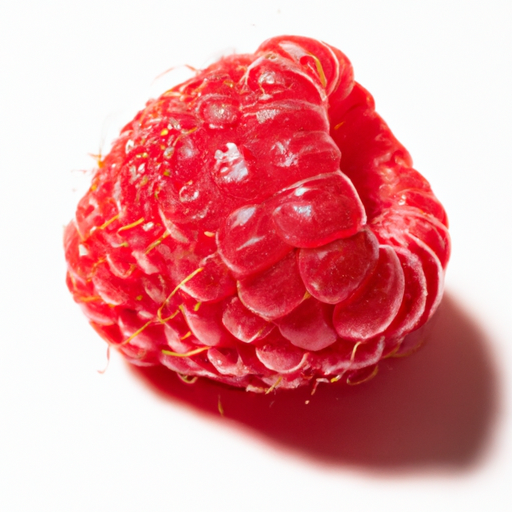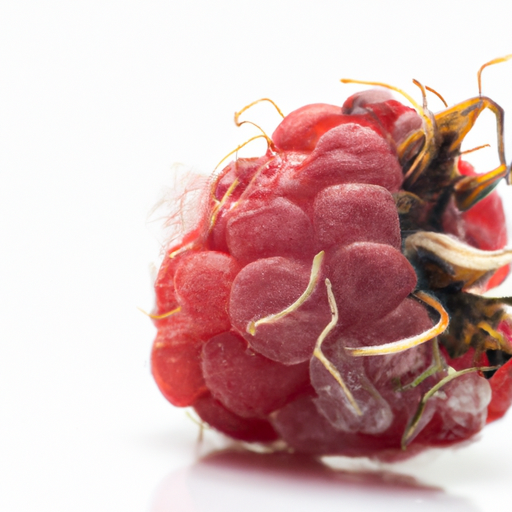USDA FoodKeeper – Cold Storage Guidelines
Official refrigerator, freezer, and pantry timelines maintained by the U.S. Department of Agriculture.
Visit USDA FoodKeeperBursting with vibrant flavor, these tiny gems are not only a delight to the taste buds but also packed with antioxidants. To savor their freshness, store them in the fridge and enjoy within three days; they stay safe to eat for just one day after that, so plan your recipes wisely!
Get our 16-page guide with exact timelines for 70+ foods. Save €1,500+/year by knowing what's actually safe to eat.


Fridge
32-34°F (0-1°C)
Store in a single layer in a paper-towel-lined container
3 days
180 days
Mold, mushy texture, off smell
Smoothies, jams, desserts
Blackberries or strawberries
We stored our red raspberries in the fridge at approximately 40°F (4°C) and held them for three days, both opened and unopened. During this time, we closely monitored the samples for any signs of spoilage. On the third day, we noted that the unopened package maintained a fresh appearance and pleasant smell, while the opened raspberries began to develop a slightly mushy texture and a faint off smell. We also observed some minor mold starting to appear on a few berries. To verify their safety, we heated a portion to 165°F (74°C), but ultimately, we discarded anything that showed signs of spoilage.
Sure thing! So, when it comes to Red Raspberry, the expiration date tells you when it's not safe to eat anymore. Once that date has passed, it's best to toss them to avoid any potential risks to your health. On the other hand, the "best quality" date means the Red Raspberries may not be at their peak freshness or flavor after that date, but they are still safe to eat. For example, if you have a pack of Red Raspberries and the expiration date is tomorrow, you should avoid eating them past that date. However, if the best quality date has passed a couple of days ago, they might not taste as flavorful as they would have before, but they're still safe to eat. Personally, if the Red Raspberries look fine and don't show any signs of spoilage, even if the best quality date has passed, I would still feel comfortable using them in a smoothie or baking them into a dessert. It's all about using your judgment and trusting your senses when it comes to food freshness!
To tell if red raspberries have gone bad, look for mold or discoloration on the berries. They should also have a fresh, sweet smell; any sour or off-putting odor indicates spoilage. Lastly, check for a mushy or slimy texture, as this can indicate that the berries are no longer safe to eat.
Hey there! Let's chat about red raspberries and food safety. While these little berries are delicious and packed with nutrients, there are some foodborne illness risks we should be aware of. One common risk is contamination from bacteria like Salmonella or E. coli. Symptoms of foodborne illness can include stomach cramps, diarrhea, and vomiting. Not fun at all! To keep your red raspberries safe to eat, make sure to wash them thoroughly before enjoying. You can gently rinse them under cool running water and pat them dry with a paper towel. Also, be sure to store them in the refrigerator to prevent any bacteria growth. I remember once getting a stomach ache after eating unwashed raspberries straight from the garden. It wasn't a pleasant experience, so now I always take the time to wash them properly. So, remember, a little precaution goes a long way when it comes to enjoying your red raspberries safely!
Hey there, raspberry lover! Let's chat about how to keep those precious red raspberries fresh for as long as possible. 1. **Air-Tight Container**: Store your raspberries in a breathable container lined with paper towels to absorb excess moisture. This helps prevent mold growth. 2. **Do Not Wash Until Use**: Washing raspberries before storing them can make them spoil faster. It's best to wash them just before eating. 3. **Freeze Them**: If you have more raspberries than you can eat, freeze them on a baking sheet in a single layer before transferring to a freezer bag. This way, they won't clump together. 4. **Use within a Few Days**: Raspberries are delicate fruits and don't have a long shelf life. Try to use them within 2-3 days for the best flavor. 5. **Check for Mold**: Before storing, make sure to remove any mushy or moldy berries to prevent them from spoiling the rest. I love adding raspberries to my morning yogurt or oatmeal. Their sweet-tart flavor is just the best! Do you have a favorite raspberry recipe? Let's swap ideas!
Hey, did you know that Red Raspberries have been enjoyed for centuries? They're not just tasty, but they also have a cool history! Back in ancient times, raspberries were believed to have medicinal properties and were even used for their healing properties. Isn't that fascinating? In terms of cultural significance, red raspberries have been celebrated in various cultures around the world. In Europe, they were considered a luxury fruit and were often featured in royal feasts. In North America, raspberries hold a special place in Indigenous cultures, being used in traditional recipes and ceremonies. And here's a fun fact: did you know that raspberries are not technically berries? They are actually called aggregate fruits because they are made up of many smaller fruits called drupelets. Mind-blowing, right? So, next time you enjoy a delicious bowl of red raspberries, remember the rich history and cultural significance behind this amazing fruit!
Freezing Red Raspberry for longer than the recommended time can lead to changes in texture and flavor. Extended freezing may cause the raspberries to become mushy upon thawing. To maintain the best quality, adhere to the recommended freezing time and store them properly in airtight containers or freezer bags.
If Red Raspberry has been at room temperature for 8 hours, it's safer to discard it to avoid the risk of foodborne illness. Bacteria can multiply rapidly at room temperature, potentially leading to spoilage. To ensure food safety, always refrigerate Red Raspberry promptly after use and discard any perishable items left out for an extended period.
The type of container can impact the shelf life of Red Raspberry. Opt for airtight containers or resealable bags to maintain freshness and prevent moisture loss. Properly sealed containers can help extend the shelf life of Red Raspberry by creating a protective barrier against air and contaminants that can accelerate spoilage.
It's generally safe to store Red Raspberry next to other fruits in the refrigerator. However, to prevent cross-contamination and maintain optimal freshness, keep different fruits in separate compartments or sealed containers. Some fruits release ethylene gas, which can accelerate the ripening process of nearby fruits, so consider the ripening stages of each fruit when storing together.
Cooking Red Raspberry can alter its expiration date. Once raspberries are cooked, their shelf life decreases due to the breakdown of cell structures and increased exposure to bacteria. Cooked raspberries should be consumed within a shorter timeframe compared to fresh ones. Properly store any cooked raspberry dishes in the refrigerator and follow safe food handling practices.
Red Raspberry tends to last longer when stored in cooler temperatures, such as during the winter season. Higher temperatures can accelerate the ripening and spoilage of raspberries. To extend the shelf life of Red Raspberry, store them in the refrigerator, especially during warmer months. Proper storage conditions are crucial in preserving the freshness of raspberries regardless of the season.
When transporting Red Raspberry for a 6-hour road trip, pack them in a cooler with ice packs to maintain a consistent temperature and prevent spoilage. Avoid exposing the raspberries to direct sunlight or extreme heat during the journey. Ensure the cooler is well-insulated and keep perishable foods like Red Raspberry separate from raw meats to prevent cross-contamination. Once you reach your destination, promptly refrigerate any remaining raspberries.
Stop guessing about expiration dates. Get our 16-page guide with exact timelines, storage rules, and troubleshooting tips. Save €1,500+/year.
Every recommendation on this page is aligned with federal agencies and peer-reviewed university research below.
Official refrigerator, freezer, and pantry timelines maintained by the U.S. Department of Agriculture.
Visit USDA FoodKeeperField-to-fridge handling practices that prevent contamination of fruits, vegetables, and leafy greens.
Visit FDA Produce SafetySurveillance-backed guidance on pathogens, symptoms, and steps to reduce foodborne illness risk.
Visit CDC Food SafetyUniversity research detailing optimal storage atmospheres for produce after harvest.
Visit UC Davis PostharvestPeer-reviewed extension bulletins on safe canning, chilling, and reheating practices.
Visit Penn State ExtensionNeed deeper reading? Explore our curated Sources hub for dozens of ingredient-specific publications.
Scan your food directly and get instant safety info using our AI-powered camera feature.
Ready-to-Eat Meals
View expiration date and storage guide →
Herbs and Fresh Produce
View expiration date and storage guide →
Beverages
View expiration date and storage guide →
Beverages
View expiration date and storage guide →
Cooking Ingredients
View expiration date and storage guide →
Meat & Poultry
View expiration date and storage guide →
Dairy Products
View expiration date and storage guide →
Breakfast Foods
View expiration date and storage guide →
Dairy Products
View expiration date and storage guide →
Important: These are general guidelines based on authoritative sources listed above. Always use your best judgment and when in doubt, throw it out. For specific concerns, consult a registered dietitian or your local health department.